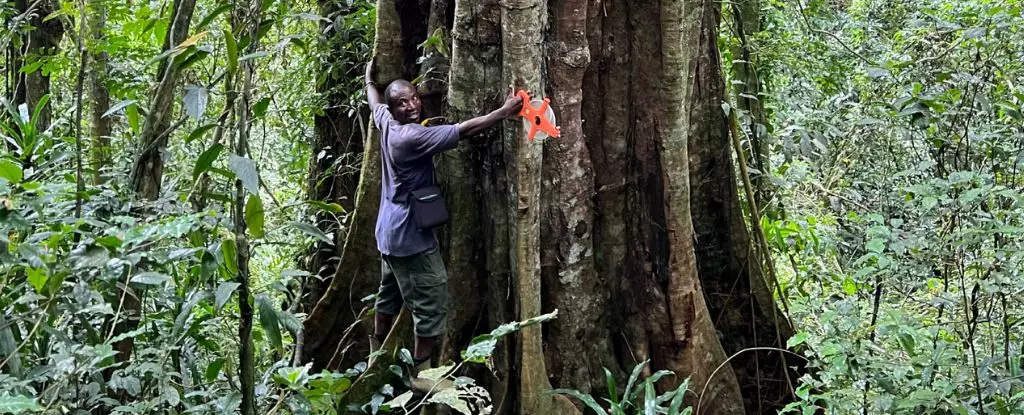In an age where technological advancements allow us to explore the farthest reaches of our planet, it is humbling to realize that remarkable biological discoveries still await us in the uncharted corners of our world. The recent identification of Tessmannia princeps, a previously unknown species of old-growth tree, starkly exemplifies this reality. Hidden within the lush and untamed rainforests of Tanzania’s Udzungwa mountains, this majestic tree is poised to redefine our understanding of longevity in the plant kingdom. While it offers hope through its undisturbed existence, it also serves as a foreboding reminder of how swiftly our actions can jeopardize nature’s miracles.
A Botanical Titan Among Vulnerability
The towering height of Tessmannia princeps—stretching around 40 meters—belies its fragile existence. Experts suggest that this tree could potentially live for up to 3,000 years, but herein lies the paradox of its magnificence: trees of such grandiose stature are dwindling in number as the relentless expansion of human activities engulfs natural habitats. The enchanting grayish bark and uniquely structured leafy appendages offer a glimpse into nature’s artistry, yet they also highlight a growing crisis. As global deforestation continues at an alarming rate, the presence of T. princeps may soon be nothing more than a fleeting whisper in the tapestry of biodiversity.
A Precious Habitat in Peril
Crucially, the survival of Tessmannia princeps is inexorably linked to its precarious habitat. Research shows that this newly discovered species is not only rare but may also be confined to a meager 1,000 individuals spread across just two valleys. Given the alarming trend of deforestation over the last 120 years in the region, one can only wonder how long these giants will hold on against the tides of greed and negligence. The vigorous root buttresses, which sometimes soar up to 15 meters, suggest a tree that has weathered millennia of environmental changes, but can it withstand the pressures of modern exploitation?
The Human Factor and Ecosystem Integrity
Scientists such as Andrea Bianchi have underscored an essential truth: the critical ecological role of old trees like Tessmannia princeps transcends their physical beauty. They offer vital ecosystem services, from carbon storage to shelter for diverse flora and fauna. Yet as these forests dwindle, so too does the intricate web of life they support. Not only do we witness the demise of trees like T. princeps, but we also witness a broader public apathy towards ecological conservation. The battle against habitat loss is echoed in the urgent call to protect the indigenous ecosystems that continue to be trodden upon for profit.
An Evolving Conservation Narrative
In the face of educational efforts and grassroots movements aimed at environmental preservation, one must ask: are we doing enough? The stark reality remains that conservation is often a mere afterthought, a “nice-to-have” in the grand scheme of economic development. With Tanzania’s population striving for advancement and poverty alleviation, the delicate balance of conservation and human progress is in a precarious state. Scientific research warns that without immediate restoration efforts, both the species and its habitat will be lost to time. The irony lies in the fight for biodiversity coexisting with the urgency to uplift local communities—a challenge fraught with complexity and ethical dilemmas.
Hope Amid Despair
With the recent attention to Tessmannia princeps, perhaps we can ignite a broader discourse about biodiversity and environmental stewardship. While scientists predict that around 75% of undescribed plant species face extinction, stories like this serve as potent reminders of what we stand to lose if we do not recalibrate our priorities. The case of T. princeps is emblematic of a larger fight, one where urgency meets optimism. A rare opportunity exists—not just to save a tree but to spark a movement towards reversing the alarming trends of deforestation and biodiversity loss. The towering presence of T. princeps stands as both a beacon of nature’s resilience and a cautionary tale about our responsibilities towards the planet. We must act decisively; the legacy of Tessmannia princeps—and many others like it—hangs in the balance.

